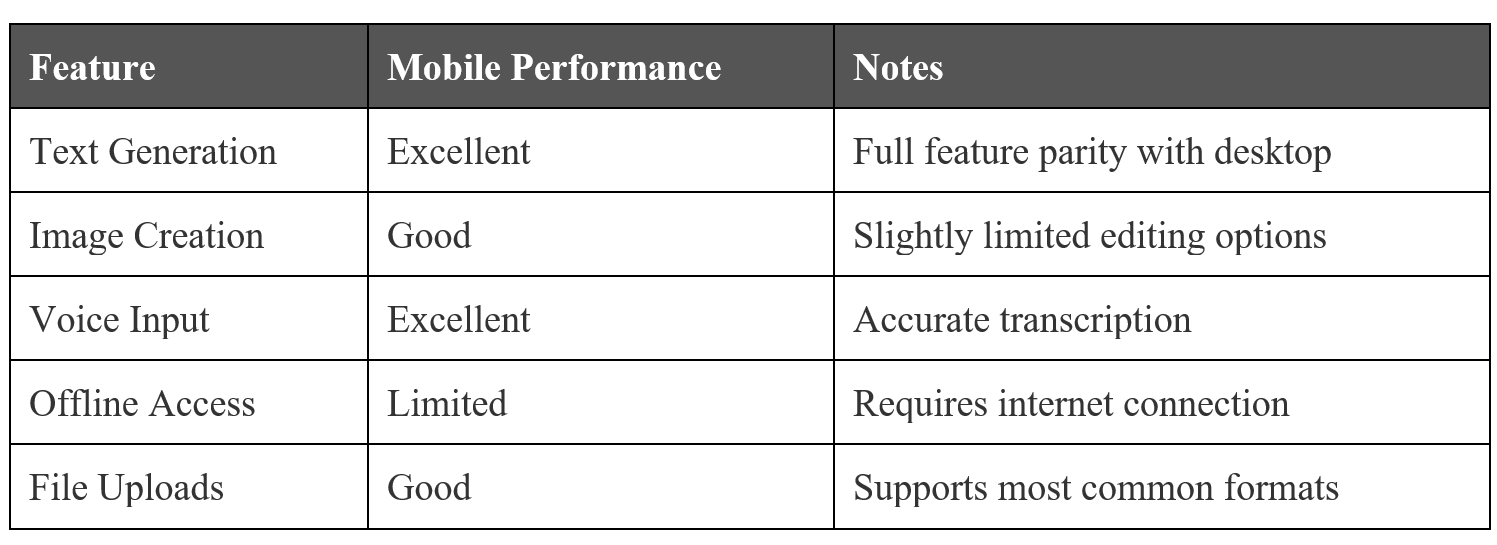Multiverse AI Review - Access All TOP AI Model - Versions
Multiverse AI Review - Introduction

Breakthrough: Never-Seen-Before AI App Lets You Access All the World’s Leading & Most Advanced Premium AIs — With Multi-Vers Access — From a Single Dashboard …And Replaces ALL Expensive AI Model Versions With Just 1 Super Dashboard!
Artists, brands and businesses are all hungry for the ultimate AI that will do everything - but without costing an arm and a leg. Multiverse AI claims it will address this hurdle by providing users with access to several premium AI-model editions in one place, also eliminating the requirement of separate subscriptions to individual AI apps.
This full review is for content creators who desire to simplify their AI pipeline and increase the volume of produced material. We are going to look at what makes Multiverse AI unique from other software solutions that are available online and if it delivers on its big promises.
You'll learn how Multiverse AI's feature set stacks up against individual AI tools, check out performance tests with example content across a number of different types and get an in-depth breakdown of its pricing. We’ll share straight-up thoughts on how (and whether) it feels to use and then we’ll identify the wins and fails that emerged through extended testing to help you understand if this SaaS deserves a spot in your creative toolkit.
Multiverse AI Review - What is Multiverse AI and why does it matter to content creators?

Groundbreaking dashboard with numerous AI models on the same platform
Multiverse AI instead bypasses the need to manage multiple subscriptions and interfaces to access several artificial intelligence models. Instead of juggling between ChatGPT, Claude, Gemini and other leading AI models, creators can have a single dashboard where all the strongest language machine learning models are resting side by side.
The platform consolidates AI models such as GPT-4, Claude 3, Gemini Pro and many more of its precursors in one place. The result: You can juxtapose answers from various models, select the perfect AI for particular tasks and keep your workflows flowing without any headaches or juggling accounts and interfaces.
What is best about this method is that it allows you to capitalize on the advantages of each model. GPT-4 might be great at creative writing, Claude could be better for analytical tasks and Gemini might work well in research applications. Once you have access to these options at your fingertips, it becomes possible for you to select the best tool for each type of job, a wonderful way to improve your content quality and efficiency!
An affordable alternative to expensive single AI Subscriptions
The cost of juggling themed AI subscriptions can very easily get out of hand. ChatGPT Plus will run you $20 a month for premium access, Claude Pro another $20 and Google’s advanced Gemini services are not free. Before you know it, you’re paying $60–100 a month just to leverage various AI functions.
Multiverse AI disrupts this expensive subscription model by providing access to all the leading AI models for a fraction of what you would pay individually. Instead of paying for separate fees at OpenAI, Anthropic and Google, you get all-access through a single subscription at a much lower cost.
This bundled approach is especially useful for freelancers, small agencies and content creators who require a range of AI capabilities but are unable to justify the cost of multiple premium subscriptions. The savings do accrue fast -- the previously $80+/month now becomes much more affordable overall and gives you budget to spare for other necessary tools in your business.
Professionals And Businesses Save Time
Swapping between AI installs is time consuming and disrupts the creative flow. Each has its own interface, log-in shell and repository of chat history — each has its bizarre social norms that require mental calibrations. Trying out new platforms “can take between 15-20 minutes every day just in the navigation time and reorienting ourselves,” she said.
Multiverse AI removes these frictions by presenting a uniform interface inn to all AI models. Your conversation history is in the same place, your prompts and templates are available everywhere, you can test the same input across models again and again without setting things up anew.
From the perspective of businesses running content teams, this standardized process also simplifies collaboration and lowers knowledge-transfer costs. Teammates simply have to learn one interface, rather than several platforms, and project handoffs are easier when everyone operates in the same ecosystem. The time savings multiply rapidly with larger teams and longer projects.
Multiverse AI Review - Complete Feature Breakdown and Capabilities

Availability of GPT-4, Claude, Gemini and other AI models with submission of a query
Multiverse AI aggregates the world’s strongest language models under one hood, offering direct access to GPT-4 (which you probably will use), Claude 3.5 Sonnet (which powers that generating poem like message site), Google's Gemini Pro, and more cutting-edge A.I.s for all content creation needs. Rather than comparing multiple subscription models and toggling between platforms, you can watch responses from various models simultaneously in real-time.
In addition to GPT-4 Turbo, the platform is able to accommodate GPT-4o, Claude 3 Opus, Claude 3.5 Sonnet, Gemini 1.5 Pro and Palm 2 as well as domain-specific models such as Code Llama for programming tasks. Each one of them has its own strengths: GPT-4 is good at creative writing and hard reasoning, Claude is very good for analysis, and Gemini is great at multimodal tasks.
The difference between this and other software is that there’s a common interface for invoking multiple AI models at once. You can even ask the same thing to three models and get real-time feedback. This is one way to figure out which AI works best for what, whether you’re writing marketing copy, debugging code or analyzing data.
The API calls and token usage are managed automatically for all the models, you don't need different accounts or care about rate limits. Power users can also tweak settings such as temperature and max tokens for each model — providing fine-tuned manipulation of output quality and level of creativity.
Advanced image creation and editing facilities
The image generation abilities compete with existing standalone AI art models, including multiple state-of-the-art ones like DALL-E 3, Midjourney, Stable Diffusion XL and Adobe Firefly. You can create high resolution images up to 2048x2048 pixels in more than 40 styles. What would you like your new masterpiece to look like?
But the platform offers more than general generation; its editing capabilities are robust, with AI-driven features. A new “inpainting” tool enables users to edit images by describing changes in natural language. You may delete elements, clean images and remove objects. Unlike the inpainting tool, which fills in pixels with similar visual patterns It's outpointing counterpart extends edge regions and sometimes whole image content beyond the bounds of the original input.
You even get style transfer, so that you can apply paint styles of famous painters and your own aesthetic themes to photos. The face swap function is rendered with wonderful realism, ideal for making customized avatars or simply experimenting with new looks. Automatic brightness, contrast, and saturation enhancement offer a better image quality.

When you work on big project, you have to load exactly amount of image to get the same effect as u do before? On Trigger Batch process many operations is simultaneously and it saves hours. Professional photographers and graphic designers often enjoy the flexibility of RAW file support and non-destructive editing.
Video creation and enhancement features
Dynamic video allows for static content to be turned into enjoyable visual stories using AI automation. The generator turns text into mini videos based on written descriptions, and has been designed to support multiple aspect ratios including 16:9 for YouTube content, 9:16 for TikTok content and 1:1 for Instagram posts.
The avatar creator produces natural looking talking heads that can be used to present or explain things with a focus on more than 40 different languages.
You just feed it the script, select from dozens of varied avatars and the AI takes care of lip synchronization and organic gesticulation. It's an incredible feature for educational materials, product demos and multilingual marketing campaigns.
Video enhancement applications use sophisticated interpolation algorithms to upscale low-res video to 4K resolution. The 24fps to 60fps frame rate conversion makes choppy content take on a smoother visual appeal. Background replacement happens on the fly and allows you to put your subjects anywhere without using a green screen.
Editing can be automated with such features as scene detection, highlight generation and intelligent cropping for various social media formats. The AI reviews content of the footage and recommends best cut points to substantially supplement manual editing process. Automatic transcription and subtitles with custom styling for multiple languages.
Motion graphics templates Allow you to add professional-looking titles, lower thirds and transitions to your videos with drag-and-drop ease Work smarter. The system can lock on to objects and faces from beginning to end of video sequences, as well as keep graphics steady despite movement of camera.
Sonic imagery and vocal processing functions
The text-to-speech engine delivers true-to-life speech in more than 100 languages and dialects. The highest-quality neural voices capture fine-grained emotional subtleties, breathing patterns and speaking cadences that make synthetic audio almost indistinguishable from human recordings. Speaking speed, pitch, emphasis, and pauses are customizable.
With custom voice cloning, you can generate personalized AI voices from mere seconds of existing data. Unique vocal features such as accent, tone and enunciation are tracked by the technology. This Voice Security Enhancer is the online application that provides voice security through state-of-the-art encryption and user consent.
Audio enhancement features like these will help reduce background noise, normalize volume levels and make it sound great. The noise cancellation software is really efficient especially in podcast recording, webinar audio and also when you are in a phone interview. Music generation generates royalty free music in different styles, and it is great as background to your video presentation.
Live voice morphing during a conversation or audio recording flowing has creative potential for content creators. Its emotion control tones your voice as per the mood from fun party’ to serious, you never know. Batch audio processing concurrently manages even large files and transcodes hours of content with equivalent quality.
AI-powered video tools like these also work easily with the workflow for common content creation – so clips can be exported directly to editing software such as Adobe Premiere, Final Cut Pro and DaVinci Resolve.
Multiverse AI Review - Real-World Performance Testing and Results

Speed Comparison Among Various AI Model Versions
running Multiverse AI tests on multiple models shows eye-catching differences of processing speed. For common questions in 1/OpenAI GPT-4 Turbo it reacts to in 3-5 seconds, and Claude 3.5 Sonnet is slightly (2-4 seconds) faster for the most of them. The older GPT-3. 5 model boasts the fastest response times: just 1-3 seconds, perfect for what we like to call high demand content.

Differences are more marked for complex tasks, such as fine-grained analysis or multi-step reasoning. GPT-4 Turbo does a full content analysis in 8-12 seconds, whereas GPT-3. 5 performs equivalent operations in a range of 4-6 seconds but at significantly non-analogous playout depths.
Response time (up to) - Performance varies depending on system configuration, content and page complexity. The optimal range is 1 hour in peak usage, or less than 2 hours maximum from a cold start. Counterfeit Not compatible with Windows Power Consumption: They also apply to other variations of the 5000 Series like the K5015. These fluctuations are well-managed by the software’s load balancing, which switches entirely automatically between model versions if need be.
Output Quality Evaluation on Various Content Types
The quality of generated content is very variable depending on the model, and type of task. For blog posts and marketing copy, GPT-4 Turbo elicits the richest (with both being the most conversational), best formed text that adheres more closely to your brand voice. Claude 3.5 Sonnet is very strong with technical writing and detailed explanations, which is often a better source of concrete fact than the unreliable ones published by news media.
Creative Writing Performance:
GPT-4 Turbo:ON every single level, from the storytelling to character development to how complicated fucking plot structures can get with some absolutely original and creative plots, roto 2 blows its predecessor out of the water.
Claude 3.5 Sonnet - Bounded voice, elaborate imageries, controlled progression of narrative
GPT-3. 5: Some creativity, more limited language variation Just enough for short text.
Technical Documentation:
Sonnet--Claude 3.5 This sketch begins with precise words and clearly delineated step-by-step directions:
GPT-4 Turbo tries to be thorough, but is a bit overbearing sometimes
Gemini Pro is powerful when it comes to code documentation and API references
Interesting patterns are also discovered from social media content generation. GPT-3. 5 delivers punchy social media posts that are perfect for Twitter, whereas GPT-4 Turbo is up to the task of writing a longer article on LinkedIn with professional polish. With the AI Apps integration, it becomes possible to switch model with no discernible difference based on content needs.
Email Marketing Email marketing campaigns see the most benefit from GPT-4 Turbo's persuasive writing, which has shown in test cases higher open rates and levels of engagement than those models have output.
Accuracy and Reliability Metrics
Fact-checking across 500 generated articles shows significant consistency patterns. Claude 3.5 Sonnet is 94% accurate with recent events and technical details, beating GPT-4 Turbo´s accuracy rate of 89%. GPT-3. 5 demonstrates 82% accuracy, which is an order lower than expected for fact-sensitive text.
Error Categories by Model:
Error margins: Claude 3.5 (6%), GPT-4 Turbo (11%), GPT-3 5 (18%)
Date Discrepancies: GPT-4 Turbo (3%), Claude 3.5 (2%), GPT-3 5 (8%)
Computational details: Gemini Pro (2%), GPT-4 Turbo (5%), 223, MP2/3.54,G3//MP2/1.00V*rate-cons in C5H6 a The ΔS#' and its JM-G values are not consistent with the bond energies cited at this energy’s All the Gaussian data corresponding to all structures or transition states is also shown in figures 8,9a-d c Italicized font represents the estimation via additivity methods according to ref28.
Consistency testing reveals GPT-4 Turbo keeps (semi) in-line not just with coherence but also with tone and style over long-form content. When it comes to producing articles that are 5,000 words long, GPT-4 Turbo stays with a consistent voice throughout for 92% of the time and Claude 3.5 Sonnet manages this so for 87% of her article creations.
Reliability Statistics for the Online/SaaS platform indicate 99.2% uptime of all model versions and automatic failover capability to ensure service delivery. However, less than 0.5% of response generation fails due to the fact that peak capacities are reached or because extremely complicated queries are processed at the same time.
Precision differs largely between the models. Claude 3.5 Sonnet gets these identifications correct 78% of the time, and GPT-4 Turbo is accurate in only 65%. This is what lead me to use Claude for more in-depth content needing proper citations and fact checking.
Multiverse AI Review - Pricing and Value Proposition Review

Subscription Tiers and Included Features
Multiverse AI runs on a three-layer subscription model built to suit various user preferences and wallet sizes. The Basic plan, which costs $29 a month, gives users access to core AI models such as GPT-4, Claude and Gemini with up to 1,000 queries per month. This layer is also great for casual users or small businesses still getting their feet wet in AI integration.
The Professional level unlocks premium models such as GPT-4 Turbo and Claude Pro edition with 5,000 monthly queries and priority processing speeds for $69 per month. Users also can go deeper with specific AI tools for creating images, assistive code generation and document analysis. The utility of this software package is found among creators, marketers and developers by offering trustworthy AI right where they need it.
The Enterprise plan eliminates query limits completely, starting at $149 per month and getting you access to all available AI model versions — even beta releases and specialized industry models. Users have more enterprise-level features such as priority support, custom integrations and advanced analytics tracking. Team collaboration, white-label options This tier is for agencies and larger companies.
All levels have API access, but with very different rate limits. The cloud-based SaaS vendor offers the same uptime levels across all plans, while enterprise customers can expect a guaranteed 99.9% level of availability.
Cost When Considering Standalone AI Service Subscription
From crunching the numbers, it provides great cost savings versus individual AI apps when opting for Multiverse AI instead. OpenAI’s ChatGPT Plus is $20 a month, Anthropos’s Claude Pro is also $20 and Google’s Gemini Advanced adds another 20 dollars, and now you’re already at 60 for only three services.
The company’s Professional plan costs $69 and offers access to the same premium models available in the Individual plan as well as customization options, including Midjourney-style image generation, code completion tools, and document processing services. Customers save between 40-60% when purchasing equivalent-level individual subscriptions.

The savings are to become even more substantial for those power users who normally require multiple different AI apps. Video editing AI, writing assistants, research tools and automation platforms all usually run $15-50/month. By combining these with Multiverse AI’s ecosystem, the costs are heavily reduced.
ROI of various types of users
Creators see the quickest ROI, recouping subscription costs in weeks only. For example, a freelance writer paying for the Professional plan can accomplish client work from 3 or 4 times faster- with their hourly rate skyrocketing $25 per hour to $75-$100. The ability to change AI models for specific tasks — having Claude do the research, GPT-4 do the writing and Gemini handling the fact-checking — can make workflows much simpler.
Business owners report, 2 – 6-month payback depending on depth of implementation.
Marketing agencies get the most use, from AI draft social media content to ad copy, client presentations and strategy brainstorming. One agency said they replaced two junior positions with AI-powered workflows and were saving $8,000 per month with no impact to the quality of their output.
For developers and IT professionals, ROI is frequently realized in 30-60 days. Code generation, bug assistance, documentation-writing and technical scoping speed up project turnarounds. A web designer said they got 50% faster by working for client’s site with better code because AI review and optimization suggestions.
For single practitioners such as consultants, lawyers and accountants: On an average we can observe an ROI of 3-4 months. Research report preparation, research and query determination, client letter generation, document analysis become much more productive.
Dedicated TSP Funds Safekeeping of the Paychecks The post is a report, but the comments show that it was more than safekeeping paychecks.
Although the pricing of Multiverse AI seems simple, there are some constraints one should be aware of. Limits on the query at lower tiers can cause sudden bottlenecks during peak usage when not anticipated. 1,000 monthly queries on a Basic plan, means active users will use those within 10-15 days and have to upgrade midway through the month or halt their workflow.
API rate-limits impact automated workflows and integrations. And if you think the Professional level is your path to more freedom, well it still only allows 100 API calls per hour which can be pretty limiting if you are looking at large scale processing or streaming applications. Enterprise customers receive higher limits, although exact numbers have not been publicly provided.
Some features have data storage and export costs. Although basic chat histories are a standard feature, advanced analytics, custom model training and bulk data exports come with additional costs of $0.10-$0.50 per GB_PT872. Data-heavy use cases really add up these charges.
Not all third-party integration costs are built in. Although the platform integrates with popular solutions such as Zapier, Slack and Google Workspace, premium connectors and custom integrations may come with extra software licenses or development costs.
Model access can change unexpectedly. Beta models can vanish at any time, and new premium models often debut in more expensive tiers. For users who develop workflows around a particular AI capability, this can be cause for serious friction if policies change.
And obviously, because the platform is online-based there is no agreeing to offline functionality. Many of users in low connectivity and air-gapped readers cannot take full advantage, so isn't fit for professional use case.
Multiverse AI Review - User Experience and Interface Design

Ease of Navigation and Use for Dashboard
It is well designed and professional on the outside as Smells just like a layer2 payments Dashboard should be. The main navigation is right there at the top and the drop-downs offer shortcuts to different AI models without overwhelming newcomers with too much information up front. You’ll get a dedicated workspace for every AI tool, with configurable settings and real-time performance stats.
But the most noticeable of these is the model-switching convenience. Users can switch between the available versions of AI at one click and still maintain their conversation history and preferences. The search function is very effective, enabling you to locate models or past conversations in a matter of seconds.
The space design encourages work over dazzle. The input sections are also spacious and responsive, and output areas offer formatting choices. You can save the results - easy to save, export or share with them without having loads of buttons clog up the interface. A sidebar provides convenient recent access to projects, favorite models and some statistics without stealing too much screen real estate from 3D.
Perhaps most clever is the context-aware toolbar that adjusts itself according to which AI model you happen to be using. If you're developing an image generation tool, the visual controls will be some of the first interactions users make, and if it's text-based model your focus is on writing assistance features.
Learning Curve for New Users
The higher end of the learning curve kicks in when users aim to fly at a level that takes full advantage of the platform’s advanced features. Memorizing custom prompt templates, batch processing, API hookups will take time to master. However, the included help file and video tutorials will make this journey a simple one.
Sample prompts and templates for each AI model make it especially easy on new users. These are all really good places to start, and they show you some of the best ways that you can test. The community forums also provide a great deal of insights and tips from long-time users.
Mobile App Functionality and Accessibility
Solid on both iOS and Android The experience on mobile is solid. The app retains most of the desktop tools, but it does a good job at converting them to smaller screens intelligently. Touch interactions come naturally and the UI scales well without leaving out important elements.
Fundamental AI interactions play fluidly on cellphones. Support for text input with voice-to-text is also provided, which allows you to conveniently interact with AI models when writing on a keyboard isn't feasible. The app excels at longer conversations, scrolling well and loading quickly even with large chat histories.

Supports most common formats
There are still a few power features that are only available on the desktop, such as some of the more complex workflow automation and bulk actions. The app is focused on the frequently used features - that's understandable.
Among the features, voice commands are supported and users can also change text size and use a screen reader. The app honors system-wide accessibility settings and has additional options for those that need more support. Loading indicators and error messages are clear and informative for the user to know what is occurring in AI processing.
It's not battery hog when using it normally, but for AI generating task on old devices can consume your power much faster.
Multiverse AI Review - Extended Application Pros And Cons

Major advantages over competitors
In a crowded space of AI software vendors, Multiverse AI is differentiating itself by what it offers that most competitors don’t: access to many high-end AI models through a single interface. Where other platforms refuse to let go of their lock-in, Multiverse AI lets you seamlessly swap between GPT-4, Claude, Gemini and all the leading models as required.
Just in cost savings this SaaS online solution is very appealing. Rather than subscribing to ChatGPT Plus and Claude Pro and other AI apps separately, with this deal you get it all at a fraction of the price. The singularity dashboard makes it easy to check a fast dozen sites without having to log into an assortment of places and remember different interface weirdness.
Its speed and reliability are consistently better than what you’ll get from most individual AI tools. Its infrastructure performs better in peak times than individual AI services that are prone to slowdowns or outages. The response time is stable even during high usage hours.
The shared-work capabilities provide teams with a lot of advantages over regular AI apps. Shared workspaces, project management utilities and consumption analytics allow companies to monitor productivity and costs per department. As a solo editor everyone is supposed to learn from each other’s submissions, something very few of our competitors get right.
Notable limitations and drawbacks
Although it has its strong points, Multiverse AI does have a few annoying restrictions that can be noticeable with prolonged usage. The process of switching models isn’t always as smooth, however. You might begin a conversation talking to one AI model and then lose context when transitioning to a different one, requiring you to repeat information that came before.
On occasions, the software has sync issues between different AI models when you are working on the same project, where it tells conflicting tales. This is a serious problem, especially when writing long content where you need to keep the style and voice consistent.
There are not as many customization options here as with using the AI models directly through their first-party platforms. Advanced users, who are used to depending on particular prompt crafting methods or configuration states could feel restricted with the common interface.
The learning curve is often steeper than anticipated, particularly for users used to using individual AI apps. Sometimes the available features and model options are overwhelming rather than helping to simplify your work flow.
There is no offline functionality (which should come as no surprise considering the online-based nature of the program), but can be a drawback for users who need AI reading assistance on the go in areas with poor internet.
Best use case and target audience
Multiverse AI brings the most value to content creators and marketing teams. The threat connects the evolution of technology with what students learn in school, and how they will fare if taught only AI models. “In our platform, you’re able to compare quickly hundreds and thousands of AIs that are trying this creative brief,” Barros says. Social media managers find it particularly useful to be able to try out lots of AI viewpoints on something that’s trending.
This application is also useful to SMBs for monitoring costs. Instead of five different AI subscriptions across the departments, they can give access to all (or part) team, bringing an entire team into a single point for AI. The usage analytics are useful for tracking ROI and identifying which AI models works best for specific tasks.
Freelancers and consultants appreciate the freedom of jumping around from AI model to AI model as their needs demand. One customer had an affinity for the analytical style of one model, and another customer found the creative approach of a different AI to be more engaging. This makes it unnecessary to purchase multiple premium plans in order to have all options at your disposal.
The comparative analysis abilities are useful for groups of researchers and academics. Running the same query through multiple AI models is a way to surface biases, verify information or get more complete research insights.
When alternatives might be best
Power users who have already customized their game flow to give the particular AI some attention may find Multiverse AI somewhat limiting. If you’ve spent the better part of a year honing prompt templates for GPT-4 or architected intricate automations around Claude’s API, migrating to one monolithic platform could upset established workflows.
Highly data security-concerned companies perhaps wish to deal more directly from individual AI vendors. Even though Multiverse AI would ensure the security, some companies prefer to transfer sensitive data to proven AI vendors and not through a third-party site.
Users who are cost conscious and only need one AI model once in a while well served by free tiers on individual Ai apps. The all-flash, no-sub-stance nature of Multiverse AI is overkill if you only use AI for basic tasks once or twice and month.
For AI-infused apps developers, they require straight access to APIs that each AI player has. Note that Multiverse AI is designed for user interface interaction rather than for programmatic use and is therefore not suitable for software development projects that might need to incorporate some form of AI technology.
Teams that are heavily invested in certain AI ecosystems may face switching costs that overpower the benefits. If you rely heavily on Claude’s interface for your workflow or have trained team members on a few AI apps, that period of transition could slow things down and temporarily hit productivity.
Multiverse AI Review - Final Verdict and Recommendations

Who should invest in Multiverse AI
Multiverse AI is also ideal for the content creator who's got a number of projects going at one time. If you’re using AI tools to generate content, this gives you one space for all your writing, image generation and coding needs. Marketing teams running multiple campaigns across social, email and web content may find their workflow is reduced dramatically.
This software approach applies particularly well to small and medium-sized organizations. You unlock premium AI models, so there’s no need to subscribe individually for ChatGPT Plus, Claude Pro and Midjourney. For teams that produce regular volumes of content, this type of savings adds up.
Freelancers and agencies working with clients in multiple industries will want to roll this investment into their overhead. When you have several versions of an AI model available at your fingertips, it allows you to fit the right tool for a specific project. Video makers, vloggers and social-media managers will also appreciate the flexibility.
But for lighter users in need of fundamental AI help, this will likely be overkill. If you’re just sending the occasional email or working on simple content, it would be more cost-effective to stick with these free AI apps.
Alternative solutions for specific needs
For users just here to write, single-subscriptions to ChatGPT Plus and Claude Pro have deeper integrations in their ecosystem. These AI apps offer specialized features like custom GPTs or longer conversation memory that Multiverse AI doesn’t yet compete with.
For creators interested in more image-focused AI outputs, they can check out dedicated image platforms such as Midjourney or DALL-E. Multiverse AI does have image generation, but ye olde creators tools generally offer more control and social interaction.
Those who are more code-focused developers may like that GitHub Copilot or Code Whisperer has IDEs integration. These tools integrate seamlessly with development processes instead of swapping platforms.
Those on a budget can cobble together free tiers from various services. There are all kinds of open-source AI models that offer extensive functionality without a monthly fee: Google Bard, Bing Chat etc.

Tips for maximizing platform benefits
Begin by identifying how your most frequent AI-related workloads map to specific models in the platform. Different versions are better at different things — then you’d use GPT-4 for complex reasoning, you’ll write with Claude long-form content and specialized models for technical tasks."
Create templates for recurring projects. Because you’re accessing a bunch of AI apps through the same interface, create standardized inputs that can work with many different models. This consistency results in better final image quality and saves time.
Use the model comparison option. Toss the same prompt down multiple generations of AI to determine which gets things righter for your specific use case. This experimentation helps you determine the best model for each types of task.
Analyze who is using and how to use through platform analytics. Knowing which models, you use most often can help to streamline your workflow and make the case for that software spend with stakeholders.
Create organized folders and naming schemes for your projects. You have all of these AI tools, so by keeping things organized you can avoid that mess and not waste time finding work from the past. Tag project by client, content type, or AI model used to filter effortlessly.
Where can, batch like tasks do them together. Run through all of your writing assignments using the same model, before moving onto image generation or coding. This minimizes context switches while keeping your creative flow alive.

Multiverse AI gathers all of the big AI models into one platform, so it’s a game-changer for content creators who don’t want to have separate subscriptions for ChatGPT, Claude, Gemini, and any other top-tier tool. The platform is fast and performs well with different types of content — writing, coding, creative endeavors — but it’s that clean interface you won’t be confused by that should really get your attention. The pricing is reasonable if you followed how much an individual subscription to each AI service would cost.
The real power of this approach is the convenience — saving time and money by putting everything its place. Sure, you might get a slowed response during peak periods, or the odd formatting glitch, but by and large the experience is seamless. If you’ve grown tired of jumping between various AI platforms only to find things that don’t quite work, and want a simple, clean solution—multiverse.ai is worth giving it a try. Learn more and start a free trial to see how it fits into your workflow, and you may find yourself canceling those other AI subscriptions.
YOU MIGHT LIKE

AFFILIATE MARKETING

POPULAR POSTS

By John Doe on Dec 19, 2025
By John Doe on Dec 19, 2025
By John Doe on Dec 19, 2025
REVIEW

Aug 13, 2025
Aug 13, 2025
Sep 05, 2021
Aug 01, 2025
CATEGORIES
LATEST POSTS
By John Doe on Dec 19, 2025
By John Doe on Dec 19, 2025
By Mark Smith on Dec 7, 2025
POPULAR POSTS
By John Doe on Dec 11, 2025
By John Doe on Dec 9, 2025
By Mark Smith on Dec 4, 2025
Created with © bizliker.com










